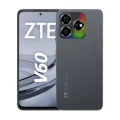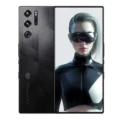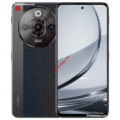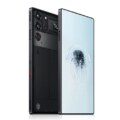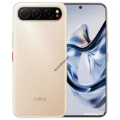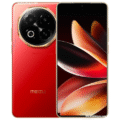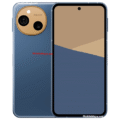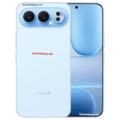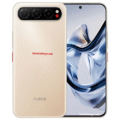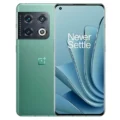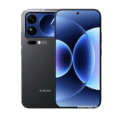Price List: Under Tk.5,000 | Tk.5001-10000 | Tk.10001-15000 | Tk.15001-20000 | Tk.20001-30000 | Tk.30001-40000 | More Mobiles
- Home
- All Mobile
- ZTE
- ZTE XiaoXian 50
ZTE XiaoXian 50
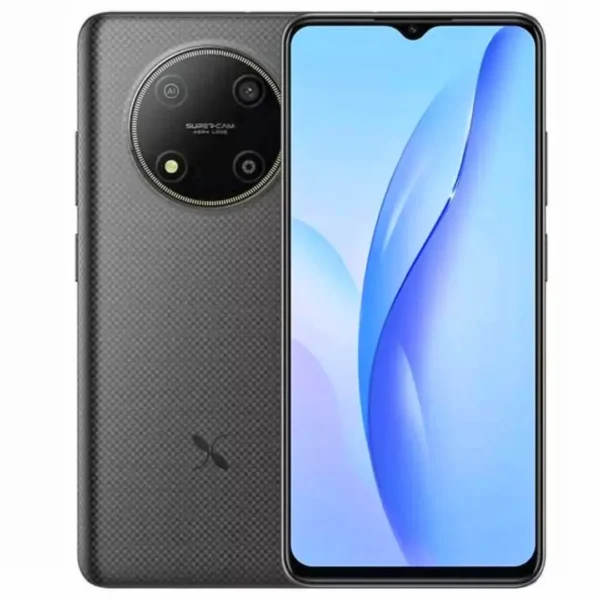


Specifications
Price in Bangladesh
| Expected Price | Coming soon |
General
| Device Type | Smartphone |
| Released | November, 2025 |
| Status | Available |
Hardware & Software
| Operating System OS => Every computer system run on a base software called Operating System (OS). Operating System controls all basic operations of the computer (such as smartphone, PDAs, tablet computers and other handheld devices). The Operating System allows the user to install and run third party applications (apps), apps are used to add new functionality to the device. | Android |
| OS Version | v13 |
| Chipset Chipset is a group of integrated circuits designed to perform one or a more dedicated functions, often with real time computing constraints, Popular smartphones are equipped with more advanced embedded chipsets that can do many different tasks depending on their programming. | Kirin 810 |
| CPU CPU (Central Processing Unit) mostly known as processors, CPU processes instructions in order to carry out certain functions that make your device operate properly. Processors are often described as the brain of computers, smartphones and tablets, Smartphones and tablets rely on processors to carry out their every task, Processors are an incredibly important factor in selecting any type of computing device, including your smartphone. | - |
| GPU GPU (Graphics Processing Unit) is a single-chip processor designed to rapidly manipulate and alter memory to accelerate the creation of images in a frame buffer intended for output to a display, This includes things such as lighting effects, object transformations, and 3D motion. | - |
| RAM (Memory) RAM (Random Access Memory) is a type of computer memory that can be accessed randomly, any byte of memory can be accessed without touching the preceding bytes that allows information to be stored and accessed quickly from random locations. RAM is the most common type of memory found in computer systems, smartphones, tablets and other electronic devices. | 6 GB |
Design
| Dimensions | - |
| Weight | - |
| Colors |
Black, Blue |
Display
| Display Type Display Technology => A number of display technologies and types used in mobile phones => TFT (Thin Film Transistor), IPS (In-Place Switching), OLED (Organic Light Emitting Diode), AMOLED (Active-Matrix Organic Light-Emitting Diode), Super AMOLED (an even advanced version of AMOLED), Resistive Touchscreen (Resistive touchscreens contain two layer of conductive material with a very small gap between them which acts as a resistance), Capacitive Touchsceen (Capacitive touchscreen technology consists of a layer of glass coated with a transparent conductor) | IPS LCD |
| Size | 6.67 inches |
| Resolution | 1080 x 2400 pixels |
| HDR 10 / HDR+ support |
Rear Camera
| Camera Setup | Triple |
| Main Camera | 48 MP |
| Second Camera | 2 MP |
| Third Camera | 2 MP |
| OIS | |
| Video | 1080p@30fps |
Front Camera
| Camera Setup | Single |
| Secondary |
8 MP |
| Video | 1080p@30fps |
Battery
| Battery Type Battery Type => Cell phones run on various kinds of batteries depending on the manufacturer, phone size or shape and features. There are basically four types of cell phone batteries => Lithium Polymer, Lithium Ion, Nickel Metal Hydride and Nickel Cadmium. | Li-Ion (Lithium Ion) |
| Placement | Non-removable |
| Capacity Battery Capacity is a measure (typically in Amp-hr) of the charge stored by the battery, and is determined by the mass of active material contained in the battery. The battery capacity represents the maximum amount of energy that can be extracted from the battery under certain conditions. | 4500 mAh |
Storage
| Storage Capacity | 128 GB |
| USB OTG |
Network
| 2G Network |
GSM 850 / 900 / 1800 / 1900 - SIM 1 & SIM 2 |
| 3G Network |
HSDPA 850 / 900 / 1900 / 2100 |
| 4G Network |
HSDPA 850 / 900 / 1900 / 2100 |
| 5G Network |
1, 5, 8, 28, 41, 78 SA/NSA |
| SIM SIM (Subscriber Identity Module) is a small card that contains mobile network subscriber's account information. This allows the phone using the card to attach to a mobile network. The SIM card is most commonly associated with GSM and UMTS mobile networks. Moving a SIM card from one phone to another allows a subscriber to switch mobile phones without having to contact their mobile network carrier. SIM cards can also be used by a phone to store limited amounts of data, such as phone numbers and text messages. | Standard SIM |
Data
| GPRS GPRS (General Packet Radio Service) is a packet oriented mobile data service on the 2G and 3G cellular communication system's global system for mobile communications (GSM), Generally, GPRS is used for the purpose of wireless data transfer, such as sharing pictures and videos or browsing the Internet via a mobile phone connection. | |
| EDGE EDGE (Enhanced Data GSM Environment) is a wireless network technology generally considered the next step in the 2G network offers data transfer rates up to four times faster than ordinary GSM networks, Generally, EDGE is used for the purpose of wireless data transfer, such as sharing pictures and videos or browsing the Internet via a mobile phone connection. | |
| Speed | HSPA 42.2/5.76 Mbps, LTE-A (CA), 5G |
| Web Browser Web Browser => a web browser is a software application used to locate, retrieve and display content on the World Wide Web, including Web pages, images, video and other files, The primary function of a web browser is to render HTML, the code used to design or markup webpages. | HTML5 |
Messaging
| SMS SMS (Short Messaging Service) is a text messaging service component of phone, Web, or mobile communication systems. It uses standardized communications protocols to allow mobile phone devices to exchange short text messages over the networks. | Yes |
| MMS MMS (Multimedia Messaging Service) is a standard way to send messages that include multimedia content (audio clips, video clips and images) to and from mobile phones over wireless networks using the WAP protocol. | |
| Email Email (Electronic Mail) is a system for receiving, sending, and storing electronic messages, Similar to a letter, email is text messages that may contain files, images, or other attachments sent via the internet to a recipient by using applications and software prograps. An email address is required to receive email, and that address is unique to the user. | Yes |
| IM IM (Instant Messaging) is an exchange of text messages through a software application, it enable you to create a kind of private chat room with another individual in order to communicate in real time over the Internet. | Yes |
Connectivity
| Bluetooth Bluetooth is a wireless communications technology for exchanging data between mobile phones, headsets, computers and other network devices over short distances without wires, Bluetooth technology was primarily designed to support simple wireless networking of personal consumer devices. | Yes |
| Wi-fi Hotspot | |
| Infrared Infrared connectivity is an old wireless technology used to connect two electronic devices. It uses a beam of infrared light to transmit information and so requires direct line of sight and operates only at close range. | |
| USB | USB Type-C 2.0 |
| GPS GPS The Global Positioning System is a satellite-based radio navigation system, GPS permits users to determine their position, velocity and the time 24 hours a day, in all weather, anywhere in the world, In order to locate your position, your device or GPS receiver must have a clear view of the sky. | Yes |
| NFC NFC (Near field communication) is a set of standards for smartphones and similar devices to establish peer-to-peer radio communications with each other by touching them together or bringing them into proximity, usually no more than a few inches. |
Media
| FM Radio | No |
| Alert Types | Vibration, MP3, WAV ringtones |
| Loudspeaker | Yes |
| 3.5mm Jack | Yes |
Sensors & Security
| Fingerprint Sensor |
More
| Made By | China |
Performance Tests
ZTE XiaoXian 50 Price in Bangladesh
The ZTE XiaoXian 50 is expected to launch soon in Bangladesh, with a price yet to be officially announced. It comes with a solid 128GB storage capacity and 6GB of RAM, targeting users who want a balanced smartphone experience without breaking the bank. Positioned as a mid-range device, the ZTE XiaoXian 50 offers a compelling mix of features such as a large 6.67-inch display, a capable Kirin 810 chipset, and a versatile triple-camera setup. Its competitive specs make it an attractive option for those seeking reliable daily performance, decent photography, and modern software with Android 13 out of the box.
ZTE XiaoXian 50 Specifications
Display and Design
The ZTE XiaoXian 50 sports a sizable 6.67-inch IPS LCD panel with a sharp Full HD+ resolution of 1080 x 2400 pixels. This screen supports HDR10 and HDR+ for enhanced color and contrast, delivering a vivid visual experience for movies, games, and browsing. While it does not boast an AMOLED panel, its IPS technology ensures wide viewing angles and decent color reproduction.
Design-wise, the phone is available in sleek Black and Blue finishes, offering a clean, modern aesthetic. Specifics on dimensions and weight are currently undisclosed, but the phone’s build quality scores a respectable 8 out of 10 in expert reviews, indicating a well-constructed body suitable for daily use.
Performance and Processor
Under the hood, the ZTE XiaoXian 50 is powered by the Kirin 810 chipset, a mid-range processor known for efficient performance and good power management. Coupled with 6GB of RAM, this combination enables smooth multitasking, responsive app performance, and reasonable gaming capabilities. While exact CPU and GPU details aren’t specified, the Kirin 810 typically features an octa-core CPU and a capable Mali-G52 GPU.
The phone comes with 128GB of internal storage, offering ample space for apps, media, and documents. However, there is no mention of expandable storage via microSD, so users should plan accordingly.
Camera and Video
Photography on the ZTE XiaoXian 50 is handled by a triple rear camera system led by a 48MP main sensor. Accompanying it are two 2MP auxiliary cameras that likely serve as depth and macro sensors, expanding creative possibilities. The phone supports 1080p video recording at 30fps, suitable for everyday video capture.
On the front, there’s an 8MP selfie camera also capable of 1080p video at 30fps, perfect for video calls and social media selfies. While the phone doesn’t highlight advanced camera features like optical image stabilization (OIS), it likely includes AI enhancements and standard modes like night photography to improve picture quality.
Battery and Charging
Equipped with a 4500mAh non-removable lithium-ion battery, the ZTE XiaoXian 50 offers decent battery life that should easily get most users through a full day of moderate use. Although there is no specific mention of fast or wireless charging, the phone uses a USB Type-C 2.0 port, supporting modern charging and data transfer standards.
Battery life was rated moderately in expert reviews, scoring 6 out of 10, suggesting it may not lead the pack but will serve everyday needs reliably.
Connectivity and 5G Support
The ZTE XiaoXian 50 supports a wide array of network bands including 2G, 3G, 4G LTE, and 5G (bands 1, 5, 8, 28, 41, 78 SA/NSA), ensuring future-proof connectivity and fast mobile data speeds. It accommodates dual SIM functionality via standard SIM slots.
Other connectivity features include Bluetooth (version unspecified), Wi-Fi hotspot capability, infrared support, NFC for contactless payments, and GPS for location services. The device also retains a 3.5mm headphone jack, a feature many users still appreciate for wired audio.
Additional Features
The phone runs Android 13 with ZTE’s customizations, delivering a fresh and modern user interface. Security is enhanced with a fingerprint sensor, providing convenient and secure unlocking. While no official mention of water resistance or stereo speakers exists, the inclusion of a loudspeaker and support for vibration and MP3/WAV ringtones round out the multimedia experience.
Reason to Buy
- Large 6.67-inch Full HD+ display with HDR support for immersive media consumption
- Mid-range Kirin 810 chipset offering balanced performance and efficiency
- Versatile triple-camera setup with a high-resolution 48MP main sensor
- Ample 6GB RAM and 128GB storage suitable for everyday multitasking and storage needs
- Future-ready 5G support covering multiple bands for fast mobile data
- Android 13 out of the box with fingerprint security and NFC functionality
- Retains useful features like a 3.5mm headphone jack and USB-C port
Verdict
The ZTE XiaoXian 50 presents itself as a solid mid-range smartphone option for users who want a well-rounded device without premium pricing. It shines with its large vibrant display, capable Kirin 810 chipset, and a high-resolution camera system that covers most casual photography needs. Its comprehensive network support, modern software, and thoughtful inclusions like NFC and a headphone jack make it a compelling choice for everyday users, students, and professionals seeking reliable performance and decent multimedia capabilities. While it may not compete with flagship devices, it delivers good value for those who prioritize functionality and cost-efficiency.
FAQ
Q: When will the ZTE XiaoXian 50 be available in Bangladesh?
A: The phone is expected to release in June 2025, but the exact launch date is yet to be confirmed.
Q: Does the ZTE XiaoXian 50 support 5G networks?
A: Yes, it supports 5G on multiple bands including 1, 5, 8, 28, 41, and 78 (SA/NSA).
Q: Can I expand the storage on this phone?
A: Currently, there is no information about expandable storage via microSD card.
Q: What version of Android does the ZTE XiaoXian 50 run?
A: It runs on Android 13.
Q: Does the phone have fast charging?
A: Fast charging is not specified; the phone uses USB Type-C 2.0 for charging and data.
Q: Is there a headphone jack?
A: Yes, the ZTE XiaoXian 50 includes a 3.5mm headphone jack.
User Reviews
Disclaimer Note
We do not guarantee that the information of this page is 100% accurate and up to date.




